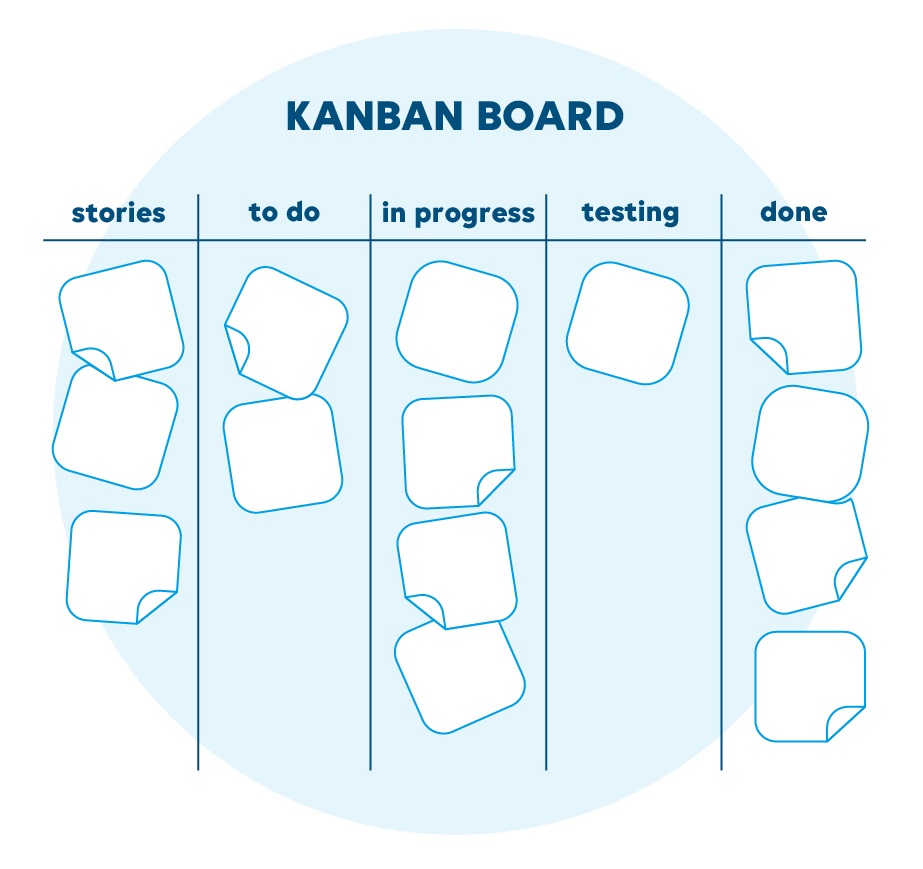Agile Webspace > Methodologies > Kanban
Kanban
A means to deliver products by increasing transparency on waste and subsequently eliminate it.
These are the four main aspects of Kanban
- Visualize workflow
- Continuously measure and improve the flow
- Pull system
- Limit Work In Progress
Visualizing the workflow is done using a Kanban board. Such a board is divided into columns, representing the different states work items can be in. Said work items then move across the board from left to right as work on the item progresses. Work items are typically visualized as (digital) post-its with different meaning colors, dots, icons.. anything to help visualize the true state the item is in.
Data is gathered on how the work flows towards completion. Based on this data improvements are continuously made to adapt to new environments and situations. Common metrics used in Kanban to gather data are cycle time, throughput, work in progress (WIP), work item age and more...
As opposed to traditional systems where work is pushed towards a next state, Kanban requires work to be pulled. This prevents that an overflow of work in a particular state brings the whole flow to a stop. There are also no pushed meetings. When the need arises, the team pulls meetings instead. For example when the number of to do items is at risk of becoming empty, the team pulls a refining meeting where they refine user stories into smaller to do items. Or when waste is detected, the team pulls in a meeting to discuss a plan on how to eliminate that waste.
One of the most important things in the Kanban methodology is how you limit work in progress (WIP). This forces the team to swarm towards finishing the work in progress instead of starting new work. It leads to having a large amount of control over your efficiency, effectiveness and predictability.

Kanban is one of the easiest systems to implement as it doesn't require you to introduce new roles, meetings or titles. You can apply this immediately to your current company processes and continuously improve the workflow.
Curious to get started? Here's the Kanban Guide. It's only 9 pages!